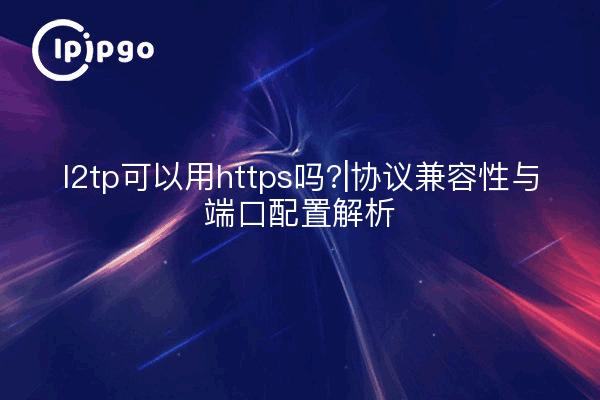
Can the L2TP protocol and HTTPS get along?
A lot of old irons in the network ops business have pondered this:Can the L2TP protocol be used in a HTTPS shell?First of all, the conclusion - these two are like soy milk with doughnuts, eat alone no problem, hard to stir together on the string of flavors. L2TP is a typical two-layer tunneling protocol, mainly dealing with data encapsulation transmission; HTTPS is the application layer of encryption protocols, which are not even in the protocol stack on the same floor of the office.
But don't close the page just yet, there's a hidden trick here:Transit via proxy IP serviceThe first thing you can do is to make them "indirectly cooperate" with each other. For example, using ipipgo's residential proxy to build a transit channel to send L2TP traffic disguised as HTTPS requests. This is like putting an airplane shell on a truck, although the essence of the truck remains the same, but it can pass through some special roadblocks.
Protocol Port Mashup Practice Manual
Take L2TP directly to HTTPS port 443? This is something that technically does work, but there are three pitfalls to watch out for:
① 防火可能抽风: Some security devices detect protocol characteristics
② Transmission efficiency is compromisedIt's like carrying bricks in a delivery truck. It's not impossible, but it costs gas.
③ Configuration will take some effort.: it has to be done both on the client side and on the server side.
Here we share a tested and usable configuration scenario:
| move | Operating Points |
|---|---|
| 1. Proxy server settings | Open in the ipipgo backendSOCKS5+HTTPS Dual Protocol Support |
| 2. Local Tunneling | Do protocol conversions with open source tools (e.g. Stunnel) |
| 3. Traffic camouflage | Encapsulate L2TP packets into HTTPS format |
The right way to open a proxy IP
This is where the value of a professional proxy service provider becomes apparent. Take ipipgo, whose familyResidential IP pool covering 240+ countries, especially suitable for scenarios that require high anonymity. For example, friends doing cross-border e-commerce, use their U.S. residential IP with L2TP protocol, which ensures stable connection and is not easily recognized.
There's a little known trick:Dynamic IP rotation + protocol mixingIt can significantly improve the covertness. For example, switching residential IPs in different countries every half hour, while randomly selecting HTTPS or SOCKS5 protocols, so that the tracker is like chasing a deformed shadow, and can't catch the pattern at all.
Frequently Asked Questions Triple Strike
Q: Will this affect the internet speed?
A: It's definitely slower than running around naked, but ipipgo'sBGP Intelligent RoutingCan automatically select the optimal line, the actual test video conference 1080P without pressure
Q: What should I do if my company's network has blocked the port?
A: Use their HTTPS proxy as a springboard to disguise L2TP traffic as ordinary web access, and the IT department monitoring background to see normal 443 port traffic
Q: Do I need to maintain the server myself?
A: No need at all, ipipgo has already packaged a ready-made solution, check the box in the user's background.protocol mixing modeIt can be enabled with a single click
Say something from the heart.
In fact, the technical solution is like building blocks, the key is to find the right components. ipipgo is the best thing is to make the complex protocol adaptation work allVisual ConfigurationThe user doesn't have to understand the underlying principle at all. Last time to help friends debug cross-border video conferencing system, using his Japanese residential IP + protocol camouflage function, froze the cross-border private line costs cut down by 70%.
A final word of caution: don't get carried away with the single agreement.Multi-protocol combinationsThat's the way to go. Just like cooking with meat and vegetables, the network program should be mixed and matched in order to be safe and efficient. If you have a problem, try ipipgo'shybrid protocol modelMaybe there's a surprise.








